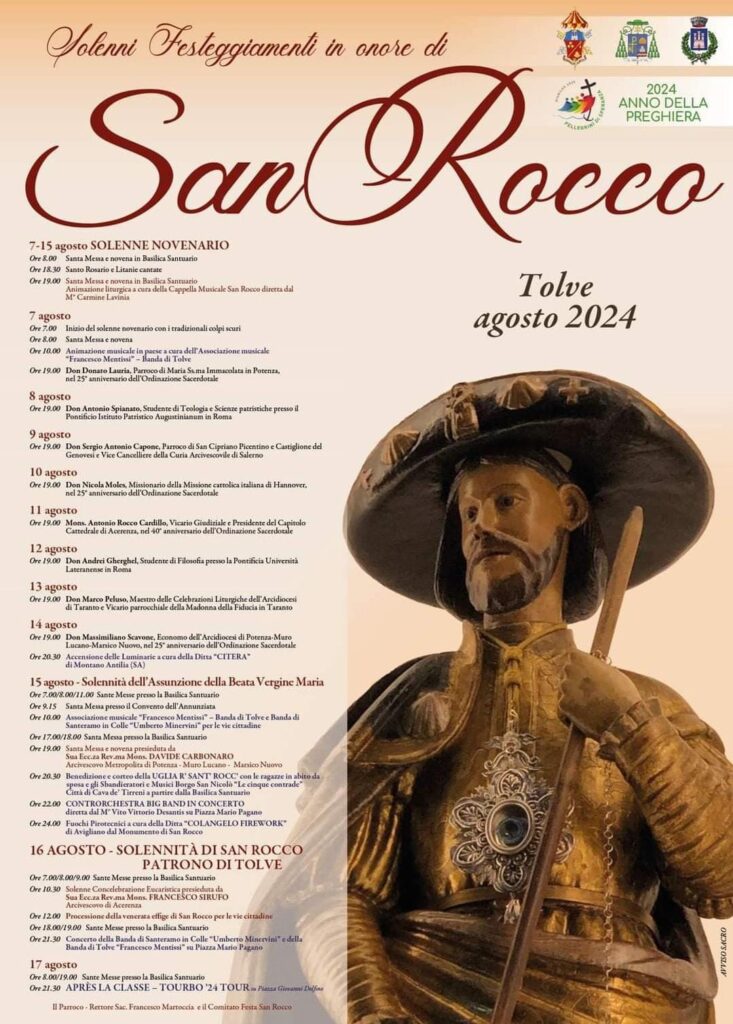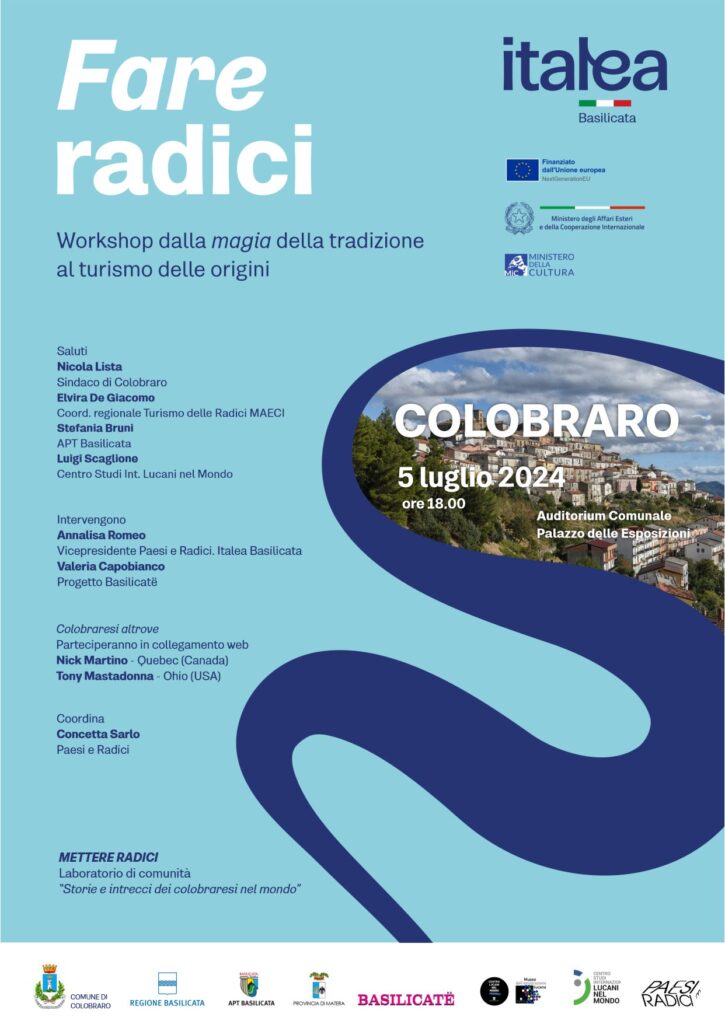The bond that binds the city of Tolve to San Rocco can be encapsulated in the phrase that can be read on the depiction of the saint at the doors of the Basilica Sanctuary and that quotes, “Tolve è mia ed io la proteggo” (Tolve is mine and I protect her).
Studies on the life of San Rocco are many and controversial; however, it is agreed that he was born in Montpellier, France, and died in Voghera, Italy. The most reliable stages of San Rocco’s life are his departure from France for Rome (in Acquapendente he performs the first healing of plague victims) with the healing of the cardinal who will present him to the pope, his return to Montpellier via Rimini, Novara, and Piacenza, the contagion of the plague in Piacenza and the retreat to the woods where he will be healed aided by a small dog who took care of him, feeding him and licking his wounds during his illness, the resumption of the route to France, and death in Voghera after 5 years of imprisonment.
Rocco was named a saint in 1414 at the Council of Constance, canonized only in 1584 and celebrated on August 16.
It is said that the wooden olive statue of San Rocco venerated in the shrine in Tolve (the church is dedicated to San Nicola the bishop who until the early 1700s was also the patron saint of Tolve), whose sculptor is unknown, was abandoned in the 16th century in the countryside of Tolve by retreating French troops (a legend that coincides with the French origin of the saint and the healings from the plague that was precisely spread by French troops and has a golden-brown color because of two fires suffered from the candles that used to be lit around it).
The Saint is dressed as a pilgrim with some elements that describe his life and works: the staff, the gourd for water, the shells, perhaps recalling his supposed pilgrimage to Compostela; then the saddlebag, the dog with a piece of bread in its mouth or licking the Saint’s wound. This is another symbolic figure that characterizes the Pilgrim of Montpellier; in fact, legend has it that a dog took care of him, feeding him and licking his wounds, during his illness. However, the hallmark of San Rocco is the signs of the plague: a sore, usually on the thigh, or hands and limbs deformed by the aftermath of the contagion.
Tolve prepares for the feast dedicated to its patron saint with the Solemn Novenary beginning on August 7 and ending on August 15.
On the morning of the 14th there is the public dressing of the statue, a symbol of something precious that the devotee has donated to San Rocco, and in the evening the illuminations are lit; on August 15 there are several religious celebrations that can be attended and at 8 pm: 00 there is the unmissable blessing and procession of the UGLIA R’ SANT’ ROCC, with some girls in wedding dresses (ex-voto dresses donated by the faithful) accompanying the shrine of the “uglia” with the image of San Rocco, accompanied in turn by the group of bearers of the Saint. The day ends with a musical performance and fireworks at midnight.
August 16 is the day, also dedicated to the celebration of many Masses and the Solemn Procession: one of the most exciting moments is precisely the exit of the statue of San Rocco from the Basilica Sanctuary after the celebration of the Holy Mass, when it crosses the threshold of the doorway and is presented to the crowd of the faithful who are waiting for the beginning of the procession at the top of the steps: the emotion is strong! Every year there are so many people, pilgrims and locals alike, despite the fact that it is the hottest hour of the day. The bells ring festively and are accompanied by the Hymn to San Rocco played by the band. Devotees are observed singing songs in honor of the saint; some of them walk barefoot with votive candles as a sign of penitence, and every street that welcomes the procession is filled with flowers and red drapes hung from balconies.
During the afternoon one can experience other religious celebrations, while in the evening one can attend a band concert in Mario Pagano Square and or enjoy a pleasant walk inside the colorful market set up in the main street. The 17th, the last day of the festival, offers the opportunity to be able to attend two Holy Masses at the Basilica Sanctuary, while at the end of the day to be able to attend a musical concert in Giovanni Delfino Square, one of the main squares of the country.




